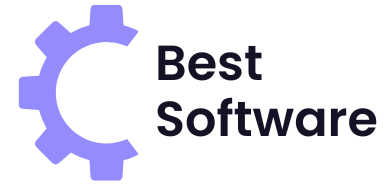In the fast-paced world of digital marketing, having the right tools is crucial for success. Online marketers face continuous challenges that require efficient solutions, making it essential to choose tools that streamline processes and optimize results. The right marketing tools can elevate campaign performance and provide insights that drive effective strategies.
With numerous options available, identifying which tools to prioritize can feel overwhelming. Focusing on five essential marketing tools can help marketers navigate their responsibilities more effectively. By leveraging these tools, they can enhance productivity, improve engagement with their audience, and ultimately boost their return on investment.
Understanding how to implement these marketing tools effectively can set professionals apart in a competitive landscape. With the right approach, they can maximize their marketing efforts and achieve significant growth.
Key Takeaways
- The right marketing tools enhance campaign performance and efficiency.
- Choosing essential tools simplifies the digital marketing process.
- Effective implementation leads to better engagement and ROI.
Essential Marketing Tools Overview

In the dynamic landscape of online marketing, utilizing the right tools can significantly enhance strategies and optimize results. The following subsections detail key essential marketing tools, covering their importance and functionality for marketers.
Email Marketing Platforms
Email marketing platforms are vital for effective communication with audiences. They enable marketers to design, send, and analyze email campaigns effortlessly. Key features include:
- Segmentation: This allows marketers to target specific demographics, increasing engagement.
- Automation: Automating follow-ups and nurturing leads saves time.
- Analytics: Tracking open rates, click-through rates, and conversions provides insights for improvement.
Popular platforms include Mailchimp, Sendinblue, and Constant Contact. Each offers various templates and A/B testing capabilities, helping marketers refine their messages for better performance.
SEO and Analytics Tools
SEO and analytics tools are crucial for optimizing visibility in search engines. They assist marketers in understanding search behavior and website traffic. Notable functionalities include:
- Keyword Research: Tools like SEMrush and Ahrefs help identify effective keywords to target.
- Site Audits: Analyzing website health and performance ensures better ranking potential.
- Traffic Analysis: Google Analytics provides comprehensive data on user behavior.
By leveraging these tools, marketers can create more effective strategies that enhance organic search performance.
Social Media Management Software
Social media management software simplifies the process of managing multiple platforms. These tools streamline content scheduling, engagement, and analytics. Important aspects include:
- Content Scheduling: Platforms like Hootsuite and Buffer allow users to plan posts in advance, ensuring consistent posting.
- Performance Analytics: They provide insights into which posts resonate most with audiences, improving future content.
- Engagement Tracking: Monitoring comments and messages across platforms enhances customer interaction.
Having a solid social media presence is essential for brand awareness and customer engagement.
Content Creation and Design Tools
Content creation and design tools are essential for producing high-quality visuals and written content. These tools help marketers communicate their brand message effectively. Key features include:
- Templates and Themes: Canva and Adobe Creative Cloud offer a variety of templates for graphics and presentations.
- Collaboration Features: Many tools enable teams to work together in real-time, streamlining the creative process.
- Stock Resources: Access to libraries of stock images and videos aids in content enhancement.
Effective content not only engages audiences but also establishes brand authority.
Customer Relationship Management (CRM) Systems
CRM systems help marketers manage interactions with current and potential customers. These platforms collect important customer data that informs marketing strategies. Key functions include:
- Lead Management: CRMs like HubSpot and Salesforce track leads throughout the sales funnel.
- Contact History: Storing detailed interaction histories allows for personalized outreach.
- Automation: Automating follow-up tasks improves team efficiency.
Using a CRM ensures that businesses maintain strong relationships, fostering loyalty and repeat business.
In-Depth Analysis of Top Marketing Tools

This analysis focuses on the noteworthy features, costs, and real-world applications of top marketing tools used by online marketers. By examining specific tools, their benefits, and success stories, one can make more informed decisions.
Comparing Features and Benefits
Many marketing tools offer a variety of features that cater to different aspects of digital marketing. For instance, HubSpot provides an all-in-one platform that integrates CRM, email marketing, and analytics. Its user-friendly interface simplifies campaign management, making it ideal for small to medium-sized businesses.
SEMrush excels in SEO and PPC management. It includes tools for keyword research and site audit, helping marketers optimize their web presence. Additionally, Hootsuite stands out for its social media management capabilities, enabling users to schedule posts and monitor engagement across various platforms.
These tools not only enhance efficiency but also improve data-driven decision-making, ultimately contributing to improved marketing outcomes.
Cost-Benefit Analysis
Evaluating the cost versus benefits of marketing tools is crucial for budget-conscious marketers. For instance, HubSpot offers tiered pricing plans, starting from free to extensive packages, which makes it flexible for different budgets.
SEMrush provides a free trial, allowing users to experience its comprehensive features before committing. Hootsuite similarly offers a basic free version, which is beneficial for beginners.
When analyzing ROI, it is important to consider how these tools can save time, increase leads, and enhance engagement. Investing in the right tool can significantly impact a marketer’s success, often leading to higher revenues that outweigh initial costs.
Case Studies and Success Stories
Real-world applications of marketing tools showcase their effectiveness. For example, a small e-commerce business using HubSpot increased its lead generation by 30% within three months by leveraging its email marketing capabilities and automation features.
Another success story involves a content marketing agency utilizing SEMrush. By effectively using keyword research and competitive analysis tools, they managed to boost organic traffic by 50% for a key client.
Hootsuite’s impact is also notable. A nonprofit organization utilized its scheduling feature to effectively manage social media campaigns, sparking a 40% increase in engagement during a fundraising initiative. These examples illustrate how strategic tool usage can drive tangible results in marketing efforts.
Implementing Marketing Tools Effectively

To maximize the benefits of marketing tools, it is essential to focus on their integration with existing systems, provide adequate training and support, and measure their effectiveness post-implementation. Each of these elements contributes to a seamless transition and improved outcomes for marketing efforts.
Integration with Existing Systems
Integrating marketing tools with existing systems ensures a streamlined workflow. Compatibility with Customer Relationship Management (CRM) software, content management systems, and other platforms is crucial. This allows for smooth data sharing and communication between tools.
Key steps for integration include:
- Assessing Compatibility: Verify that the new tools can work with current systems without significant modifications.
- Setting Up APIs: Utilize application programming interfaces (APIs) for real-time data exchange.
- Testing Functionality: Conduct tests to confirm that the integration functions as intended.
Effective integration helps users access valuable insights, enhances data accuracy, and saves time on manual entries.
Training and Support Considerations
Providing training and support is vital for ensuring that team members can maximize the use of marketing tools. New technologies can be overwhelming, so a structured approach to training can enhance user confidence and efficiency.
Consider these training strategies:
- Hands-On Workshops: Offer interactive workshops that allow users to practice in real-time.
- Resource Materials: Develop guides or tutorial videos that users can refer to at their own pace.
- Ongoing Support: Establish a support system that allows team members to seek help as needed.
Support fosters a culture of continuous learning and can significantly improve tool adoption and usage rates.
Measuring Tool Effectiveness
Measuring the effectiveness of marketing tools is crucial for ongoing optimization. Organizations should establish clear metrics to evaluate performance and ROI.
Key metrics may include:
- Engagement Rates: Assess how well the tools are driving user engagement.
- Conversion Rates: Monitor how many leads become customers through the tools’ efforts.
- Cost Efficiency: Analyze the return on investment to determine cost-effectiveness.
Regularly reviewing these metrics will guide decisions on whether to adjust, replace, or expand the use of specific tools.



